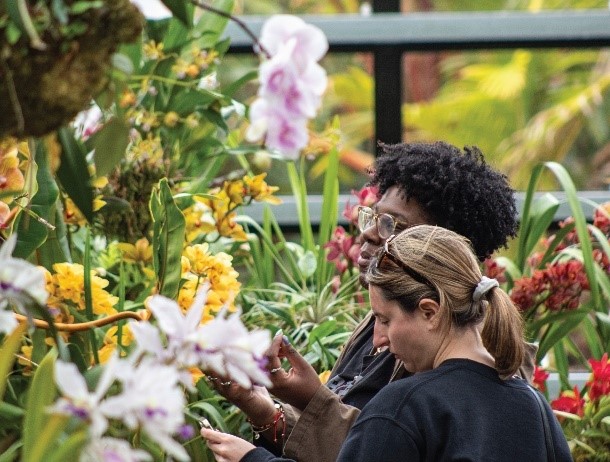
The Gardens of Golden Gate Park
Audience Research for an Interpretive Master Plan
Museums for America/Institute for Museum & Library Services (IMLS)
The Gardens of Golden Gate Park (GGGP), a new entity in San Francisco’s Golden Gate Park, including San Francisco Botanical Garden, the Conservatory of Flowers, and the Japanese Tea Garden, received Museums for America/IMLS (Institute for Museum & Library Services) funding to engage in a community-driven planning process and audience research, with the goal of producing an interpretive plan. Our team conducted two phases of audience research, in collaboration with interpretive planning consultants, MIG, and Smithsonian Institution Exhibits. In Study 1, we interviewed visitors to Golden Gate Park, but outside of the three gardens, to understand their backgrounds, interests, and knowledge of gardens generally, and the Gardens of Golden Gate Park specifically. Findings revealed that many were in the park and unaware that these gardens were there, and, that in some cases, few visited them, or thought the entire park was a garden so wondered why we were asking about them.
In Study 2, we conducted two interactive “card sort” activities with visitors to each of the three gardens to ask: “WHY they were visiting that day?” and “WHICH key message they would like to find out more about, and why?” The WHY cards were based on John Falk’s five identity-related motivation categories (e.g., as an Explorer, Facilitator, Experience-Seeker, Professional/Hobbyist, or a Recharger) and the WHICH cards presented four possible themes (Biodiversity, Climate, Human-Plant Relationships, and Taking Care of this Place) from the 50% completed master plan. There also was an “Other” category, if none of the four resonated. We also collected basic demographic information (e.g., age, gender, race/ethnicity, age), where they live, and the social arrangement of the visit–visiting alone, with friends/family. Some of the recommendations that emerged included:
Consider Broader Outcomes
In all three gardens, research participants voiced their interest in broader outcomes for their visitor experience beyond cognitive learning. Echoing John Falk’s efforts to discuss the value of these institutions through the lens of an expanded, evolution-based view of well-being, although some were interested in expanding their intellectual well-being, the outcome most focused on in the themes, personal well-being was mentioned by many in the sample, as well as physical well-being, in particular, that gardens are spaces that offer respite and a safe place to build one’s personal health; and social well-being. Although a proportion of the sample were visiting alone, most were with family and friends. As observed when conducting out in the park interviews during Study 1, there were several visitors to each garden in the sample that were there on dates or to commemorate important events such as wedding anniversaries and birthdays.
Reach Out to Families Families, even those with children three years and older were not a predominant social group observed during data collection. Perhaps as we discovered in Study 1, they are not sure whether gardens are child appropriate and so if they are welcome. Given that the gardens have specific activities for children and materials that could help parents know about active things their children can do and see, this probably needs to be better communicated to the public.
Build Explicit GGGP Connections between the three gardens, in particular through the themes selected as cross-over messages. Only one research participant mentioned another one of the gardens during data collection, but all seemed intrigued about the GGGP’s desire to highlight similar themes in the three gardens. Our previous research regarding such messaging, suggests that these connections need to be highlighted and reinforced throughout each garden, and the format and labeling needs to be explicitly “branded” in such a way that visitors realize these are intended connections, and recognize them site to site. This is not a time when “subtlety” will serve any useful purpose.
